A working set in the context of eclipse is a logical grouping of related projects to ease search and organize views within the IDE.
A resource working set can capture all types of resources - maybe java source, html, xml, javascript, images - anything that exists within the scope of the projects included into the working set.
The Java working set is a different working set (it is NOT a subset of a resource working set!) which captures only those java files which belong to a source folder and are being compiled into the classpath, or those java files which belong to a module (library) in the build path. Hence, it lets you lookup java "classes" which are in the classpath. Note that all java file in your project may not necessarily be built into the classpath (for example when you exclude a java source file, it does not get built any more). But a java source file which is not included in your classpath can still be detected by a resource working set (you will notice that the icon for an included java source file is a solid J, while for an excluded java source, it is a hollow J).
Example:
Say you have two projects p1 and p2 of which p1 belongs to the working set but p2 does not. So:
MyClass.java (belongs to p1 and included in build path) - Shows up in java type search (Ctrl + T) and also in resource search (Ctrl + R).
MyOtherClass.java (belongs to p2 and included in build path) - Does not show up in java type search nor in resource search.
MyExcludedClass.java (belongs to p1 and excluded from build path) - Does not show up in java type search but shows up in resource search.
MyExcludedClass.class (belongs to a dependency jar in the build path of p1) - Shows up in java type search but does not show up in resource search.
MyWebPage.html (belongs to p1) - Does not show up in java working set but in resource working set.
MyOtherWebPage.html (belongs to p2) - Does not show up in java type search nor in resource search.
MyConfig.xml (belongs to p1) - Does not show up in java type search but shows up in resource search.
So, in the context of a Java developer's use: I use Java working sets to look up types / classes defined in Java, whereas the resources working set to lookup all different types.
